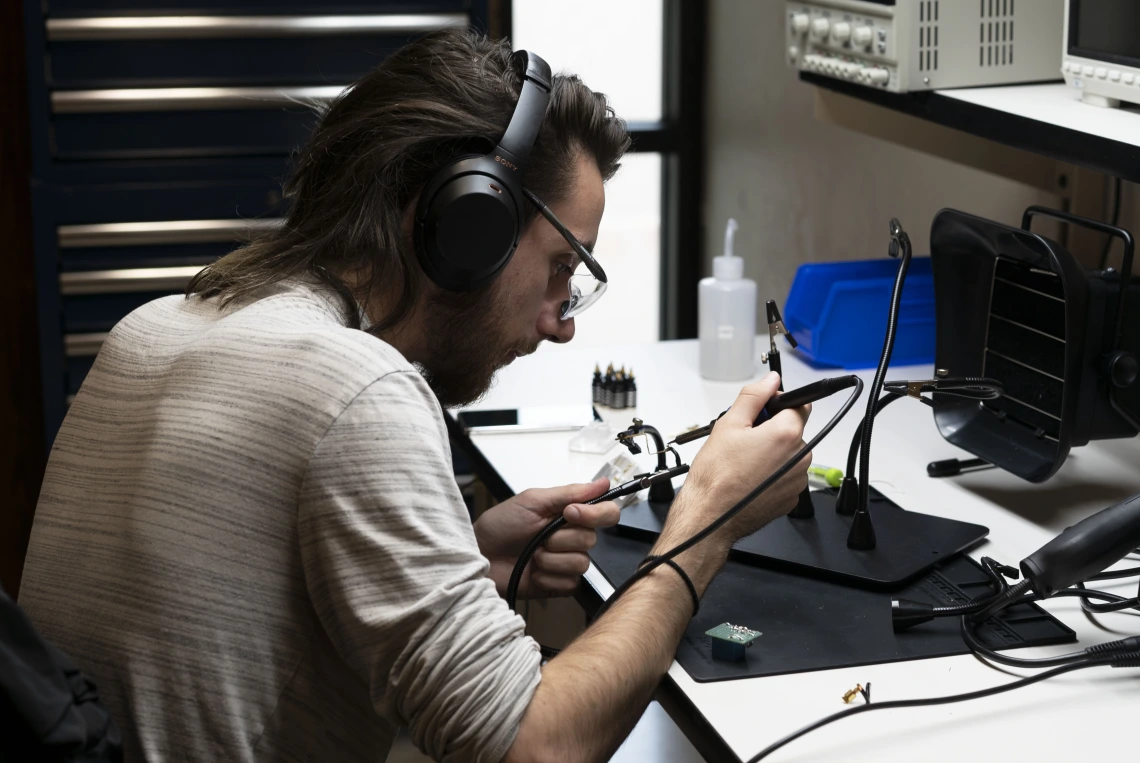Design Fellow Hired to Lead Makerspace Community and Safety

A student uses the Engineering Design Center. While the center is open to all engineering students, those working on Interdisciplinary Capstone projects have the highest need for the makerspace.
The College of Engineering’s new makerspace has gained a dedicated professional who is working to develop the fabrication capabilities of both the Engineering Design Center and the students. Matthew Briggs, a new assistant professor of practice and design fellow for the college, is developing courses on equipment safety and instruction, as well as holistic approaches to the makerspace role on campus.
“The most important part of a makerspace is the community. This is a community of practice, and the practice is making things,” Briggs said. “This community is a knowledge base and resource for the members, and it produces belonging. This belonging informs the members in their journey in life, and I've seen it have a tremendous impact on students. This can culminate in a career decision that employs more design or fabrication or just the participation in similar communities in their future.”
Briggs is sharing his time between the Engineering Design Center and the Health Sciences Design Space. While each space provides students the resources to bring their classroom lessons into the real world, they include different equipment and focus. The projects produced in the spaces are unique to their programs, but the community and knowledge that supports them is shared.
The 5,000-square-foot Engineering Design Center includes design build space, project storage for the capstone teams, a machine room, an electronics room, a sewing area, a computer lab and meeting rooms. These spaces are equipped with 3D Printers, 3D scanners, sewing machines, a plotter cutter, woodworking and metalworking equipment, and electronics equipment.
In addition to instructional courses on the equipment, Briggs is developing and teaching more holistic courses that go into the philosophy of making, material selection, environmental and human impact, and communities where learners can support each other.
“He was very accomplished in outfitting, managing and maintaining a large-scale makerspace open to the community. That’s a rare set of skills,” said Kasi Kiehlbaugh, Senior VP Health Sciences Director. “But above and beyond that, Matthew had a strong interest in teaching and transferring that knowledge to students. So he could bring that technical know-how, but also translate that and teach.”
Briggs explained that students can often have a hard time employing the design thinking process, especially when it comes to physical objects. Because of this, they think of the process “as a linear process rather than a cyclical process.” They become too invested in their design due to the time, labor, and materials they put into it – to the point that they don't want to alter the design.
His spring semester course, Healthy Design Practices: From the Makerspace to the Community, focuses on “a confidence-building study of the makerspace.” Briggs aims to ease potential frustrations with a focus on design thinking, rapid prototyping, computer modeling, and makerspace culture to help students understand and develop healthy making practices. This course is available to all undergraduate and graduate students in any discipline.
“We’re really excited to have found this unique way to pair two separate programs with these common threads of makerspaces, and bring someone in who can bridge that gap and create some interdisciplinary opportunities for students to learn from each other,” Kiehlbaugh said.

